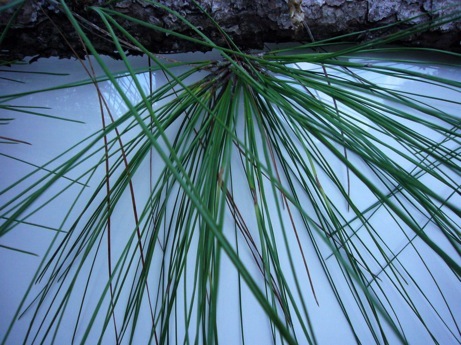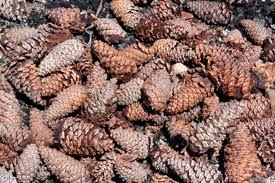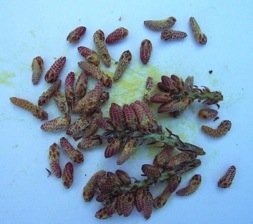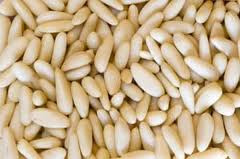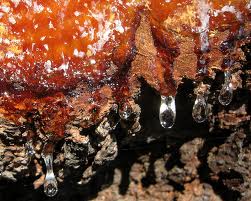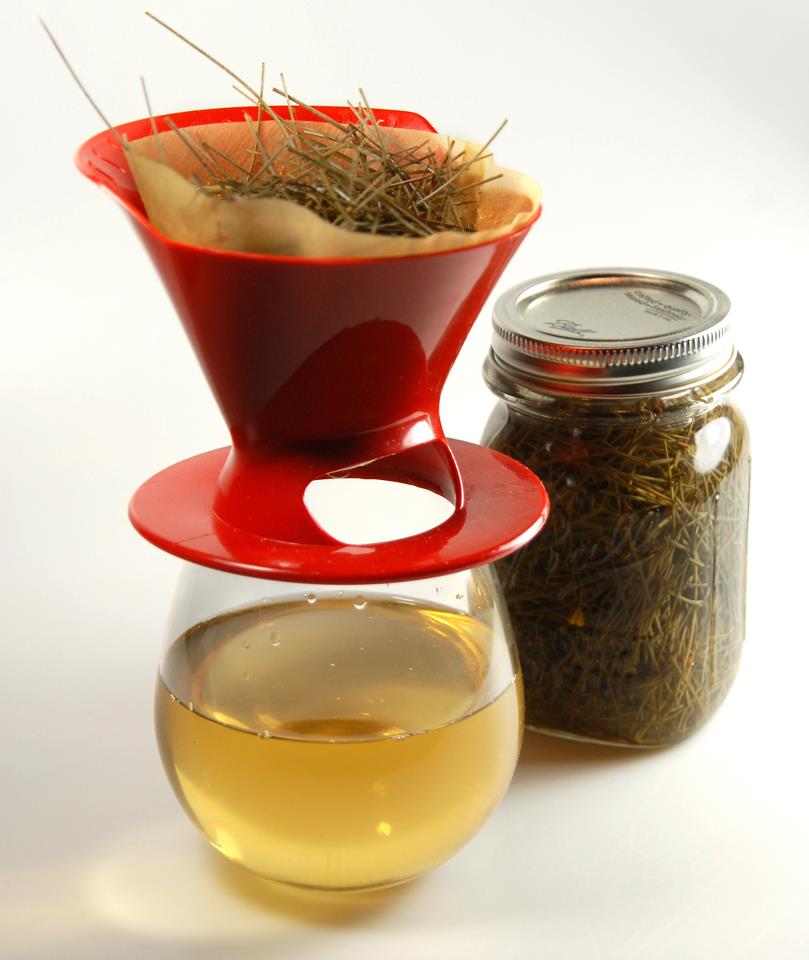Pines: Not just for breakfast anymore
Euell Gibbons became famous for asking, “have you ever eaten a pine tree?”
A lot of folks had a laugh over that, but perhaps Euell will have the last laugh. We all probably have an ancestor who ate a pine tree or part of it now and then. I know I did. And people may eat pine again. It’s a family with over 200 species and has served man well, famine food to ship masts. So much has been written about this family let me see if I can say a few things others haven’t.
Where ever there have been pines and people the people have depended on the pines. Besides food, they had and still have medical uses. Pines have been used for the making of stimulants, laxatives, diuretics and vermifuges, among many including Shikimic acid, the main crude ingredient in Tamiflu.
There are actually two groups of pines, softwood pines and hardwood pines. The soft pines have needles that are found in groups of five on twigs. Their wood is actually low in density. Hard pines have needles in groups of two or three per twig. Their wood is moderate in density. This may seem like a technical distraction but often telling pines apart is very difficult and how the needles arrange themselves is important… unless you are making pine needle tea, then just put a few needles or the tip of a young branch in hot water and you’ll have a nice serving of Vitamin C. Pine needle tea saved many a sailor in olden days from scurvy. (Despite what some websites say, in tea form the pine needles are no threat to pregnant women. In fact let me explain that.)
The basis for this rumor is a veterinary study decades ago. If you are a cow and you eat many pounds of Ponderosa Pine needles you have a 5 to 8 percent chance out of 100 of having an abortion or still-birth. If you boil a huge amount of pine needles in water for hours down to a small amount of gross liquid and you drink it, then maybe it would cause an abortion. A few of needles soaked in hot water is no threat to anyone except for possible allergies. Here’s what famous forager Euell Gibbons had to say: “When I was a boy we used to eat ponderosa pine for pleasure . . . called it “slivers”. In the spring the bark is really gorged with starches and sugars and tastes quite sweet. It’s also high in vitamins.”
The cambium of the pine (between the bark and the wood) can be boiled or roasted as a famine food, and makes a reasonable flour. Fried in olive or coconut oil it’s actually tasty. The cambium near the base of the tree is better than the cambium near the top of the tree. That bit of advice always struck me as odd as if I would climb a pine to get a strip of bark off the top when the bottom is so close and handy. And of course nearly everyone has had a pine nut or two. Animals like the pine nuts as well, including squirrels, turkey, quail, and brown-headed nuthatches.
The collecting of pine nuts for human use is a debatable issue. Some 20 species of pine have nuts big enough to harvest for human food. If foraging is a hobby, then go ahead and collect a few (put the brown, unopened female cones near a fire to make them open and release the seeds.) If in a survival situation, however, one could expend more energy collecting pine nuts than energy gotten from the pine nuts so it is a significant decision to make when out of food. Female pine cones can weigh up to 10 pounds and be two feet long. The pinyon pine, where we get the familiar pine nut in the US, is the only pine with one needle per twig.
But, there is more to the pine than nuts, cambium, and needles. Like the cambium, the young male pine cones can be boiled and eaten. What is a male pine cone? Well, they are small, soft and papery whereas the female cones are woody and tough. Male cones really shouldn’t be called cones. Technically they are microsporangiate strobili. Say that at a cocktail party and see how many conversations you start. (Hint: micro-spore-WREN-gee-ate stro-BYE-lee) The best I can do is that a male pine “cone” looks like a small cluster of toasted coconut bits shaped like orzo. See picture, upper right. If you have a better description let me know.
Here is another little known fact: During certain times of the year my pickup is covered with a light yellow dusting. Starting in winter here and going into spring the pines have sex on their minds and the fellows are releasing pollen. For some pine pollen means misery from sniffling and sneezing. But pine pollen is more than just the mere powder of pine lust.
Pine pollen is a large particle, and since it depends on the wind, it can’t travel too far. It also has a waxy coating on it’s surface which makes it a minor allergy trigger, though a few folks are allergic to it. When the pine is pollinating other trees that are more significant allergens are secretly pollenating such as birch, cedar, oak and sycamore. Often folks who think they have a pine allergy are actually allergic to one or more of those other trees.
Which brings me back to pine pollen. It has over 200 identified elements from vitamins to proto male hormones… yeah, it’s a guy food. It’s been called the natural testosterone, androstenedione, but that is a marketing exaggeration. It has about 27 nanograms per 0.1 grams of dry weight, not suitable for the bulking up weightlifters want, but available none the less. Putting the pollen under the tongue keeps it from being destroyed by the digestive system.
Androstenedione is an adrenal hormone produced in humans. Reduce androstenedione by one molecule and you have testosterone, which both men and women have in different amounts. Androstenedione can raise testosterone levels. The effect lasts about a day. And this is how the Native Americans used it, for extra energy when they needed it. So when on the run, grab a little pine pollen. Pine pollen also seems to have a beneficial effect on the cardiovascular system as well. How do you collect it? Put a sack over the microsporangiate strobili and shake, if it is the right time of the year, lick the hood of your car.
And what about shikimic acid and the flu? Processed shikimic acid prevents the flu from reproducing, thus reducing symptoms and the duration of the flu. The drug Tamiflu is made from the seed pods of the Chinese star anise tree which is 7% shikemic acid. Researchers have found that White Pine needles have enough shikimic acid, 3%, to make its extraction commercially viable. Spruce also have the acid and it is presumed other pines do in varying amounts.
The English name pine comes from the Greek Pitus thru Latin Pinus (PIE-nus and PEE-nus) by way of French “pin.” Contemporary Greeks say ;’ PEF-ko.” That takes us now to how the Greeks use pine, and that is to flavor a white wine called retsina.
Greeks have been making retsina for a few thousand years. It was an acquired tasted by accident. They stored their white wine in clay containers lined with pine pitch (to keep them from weeping.) The wine took on the subtle flavor of the pitch. Now days, retsina comes in a wide range of flavors, from delicate to intense. I have several relatives who make it. One of my fondest memories of Greece was having cloudy, young, homemade retsina high in the mountains after a meal of kid roasted on an olive wood fire. There’s one other advantage to retsina: Take it to a party and no one will steal your wine. To make your own retsina the short way, put a pea-size piece of pine pitch in a bottle of cheap chablis and let set in the refrigerator for a long time.
Young pine roots are edible as are stripped pieces of their bark. The bark can be seeped in water for its sugar and the water drank. Also, many pine trees have burls on a limb and those can be broken off and used as a throwing stick or mallets.
NOTE: The “Australian Pine” is NOT a pine. It can not be used like true pines.
Green Deane’s “Itemized” Plant Profile
IDENTIFICATION: Pines are evergreen and resinous trees growing to 100 feet tall, the adult tree has long needles in clusters of three to five up to 18 inches long.
TIME OF YEAR: Needles and inner bark available year round, young male cones and pollen in spring.
ENVIRONMENT: Pines grow well in acid soils, some on calcareous soils; most require good drainage, preferring sandy soils to accommodate a large tap root up to 12 feet.
METHOD OF PREPARATION: Needles raw as a nibble or in hot water for tea, or chopped and used like rosemary. Inner bark near base is edible, preferably cooked, can be made into a flour, very high in vitamins A and C, young male cones boiled, pollen eaten as is. The core of young roots are edible raw when peeled of the outer bark. The young root bark can be seeped for its sugar content.
HERB BLURB
Icelanders of the 1400’s took pine sap mixed with honey to ease lung troubles. Oriental herbalists use pine knots as medicine, especially for arthritis.
Spatchcocked Chicken
Traditionally a spatchcock is a game bird that is prepared for roasting, broiling or grilling by removing the backbone and sternum of the bird and flattening it out before cooking. In this recipe the pine needles are used like rosemary.
3 ½ – 4 pound young chicken,
Sea salt and ground pepper
2 tablespoons young pine needles or shoots, minced
2 -3 tablespoons lime juice
Rinse chicken with cold water, dry. Remove extra fat, trim off wing
tips. Place chicken breast side down and using poultry shears cut along
backbone, starting at the neck. Repeat on the other side of the backbone
Spread the two sides apart and press down on the breast so that the chicken
lies flat. Season both sides with salt and pepper and lemon juice.
Build a charcoal fire on one side of your grill;. Place chicken skin side down at the edge of the fire with legs closest. Turn over when skin starts to brown. Turn and move chicken to the side of the fire and cover with a large disposable aluminum pan. This creates a “mini” oven providing high heat off the direct fire. The grill cover can be used, but the browning and flavor will be less. Cooking time varies, depending on the fire and the size of the chicken. Check the temperature at 20 minutes after turning. When the temperature in the thigh reaches 175 degrees, remove from the heat and let sit, sprinkle with chopped pine needles, loosely covered for 15 minutes before carving.
Pine Needle Tea
You can make pine needle tea two ways. One is to pull three or four needles off a tree and stick them in a cup of hot water. Wait a few minutes then enjoy with or without sweetener.
Or collected a handful of pine needles. Needles nearest the trunk are higher in Vitamin C. Chop the needles and put them into a tea ball. Bring water to a boil. Take off the boil. Steep the pine needles for 3-5 minutes. The tea is delicate.
Pine Infused Vinegar By Pascal Bauder
Pine infused vinegar: Apple cider vinegar and pine needles were placed in a jar for 6 weeks after water bath canning. The ratio is around 50% pine needle and 50% vinegar. Extremely sharp (pine needles have this lemony/tart flavor) so I also added some of my pine sugar (pine needles powdered with organic sugar) to it. It’s delicious, sort of sweet and sour with a pine touch. It was quite cloudy so had to filter it twice. Soon in a couple of restaurants in Los Angeles. For the vinegar infusion I used fresh needles and for the pine sugar I used dehydrated ones. So it’s a mix really. Just apple cider vinegar and pine was quite…sharp which is why I added the sugar.

